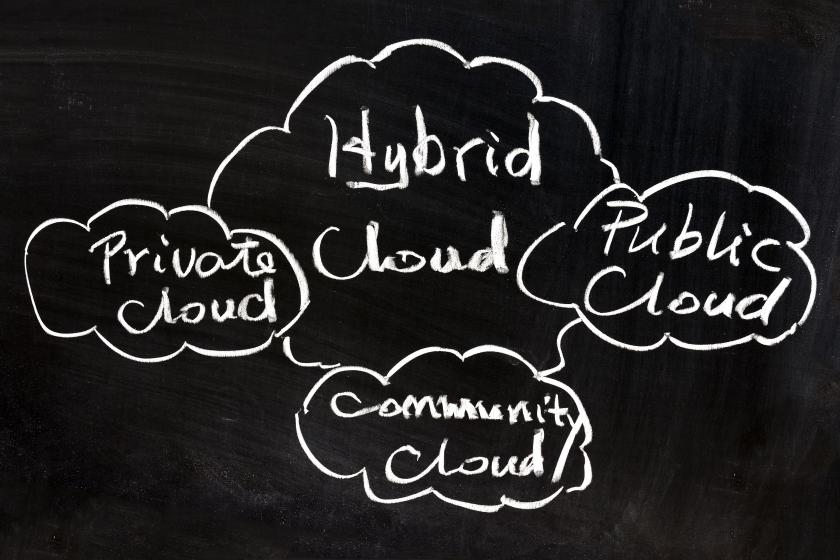Navigating Single Cloud, Multi-Cloud, and Hybrid Cloud EnvironmentsNavigating Single Cloud, Multi-Cloud, and Hybrid Cloud Environments
Before deciding on a cloud strategy, enterprises must fully understand the possibilities and the limitations that come with single cloud, multi-cloud, and hybrid cloud environments.
February 9, 2024

Cloud environments continue to evolve at an extremely rapid rate. For IT leaders, it can feel like they’re constantly drinking from a firehose just to keep up with the latest developments. Despite this blistering pace, it’s important for IT leaders to occasionally pause, reflect, and assess their cloud estates to ensure they’re maximizing their environments. If they don’t, they can quickly lose control.
Part of the challenge is fully understanding the strengths and weaknesses of the different cloud environments they may have. Whether IT leaders are managing single cloud, multi-cloud, hybrid cloud environments, or any combination of those three, it's imperative they know the pros and cons of each.
Single Cloud
Single cloud deployments can be a good option for smaller enterprises with limited workloads. Firstly, it's a lot simpler to manage a single cloud environment than it is to manage multiple cloud environments. There is a single set of tools to learn, and everything can be managed in one domain. Additionally, single-cloud deployments are oftentimes more cost-effective than multi-cloud approaches, especially if an organization has limited resources. Another byproduct of single cloud deployments is that they offer a more consistent user experience, which applies within an organization and with external partners and customers.
On the other hand, single cloud deployments present their own set of challenges. These types of deployments can lead to vendor lock-in, meaning that it can be both expensive and challenging to transition workloads to another cloud platform in the future. It also limits the optionality that comes with multi-cloud and hybrid cloud deployments. Each cloud provider has its own set of strengths and weaknesses, so by locking yourself into one cloud provider, you must accept those attributes as they are.
The biggest drawback to having a single cloud is in the case of an emergency. If the one cloud provider you rely on has a major issue, like a service disruption or data breach, you don't have other cloud providers to fall back on. This can cause widespread disruption throughout your organization, which can also extend to all your partners and customers, with major financial implications for you and them.
Multi-Cloud
A multi-cloud strategy provides several benefits to enterprises, such as the ability to optimize cloud spend, build more resiliency for their businesses, and use a best-in-breed approach across clouds where strengths are being maximized and weaknesses are being minimized. A multi-cloud approach is optimal for global businesses that move quickly and require a lot of flexibility.
At the same time, managing a multi-cloud environment comes with its own set of challenges. The reason it’s so difficult to manage a multi-cloud environment is that each of the major cloud providers is unique in many ways and requires their own level of expertise to command effectively. It's exceedingly rare that you'll find someone with a strong grasp of AWS, Azure, and GCP, so in most cases, you'll need specialists in each. Because of this, it can make it particularly challenging to carry out day-to-day tasks with agility if you don't have the right people supporting your business. This becomes infinitely tougher when trying to integrate a new cloud into a multi-cloud environment.
Managing a multi-cloud environment manually can be all-consuming. The best way to minimize this complexity, in the network specifically, is with multi-cloud networking software (MCNS), which enables you to bring a level of consistency to the multi-cloud management process. Rather than handling each cloud one by one in a vacuum with different policies, MCNS brings everything together so there's a single management point, and you can see how all the clouds interact with each other. For example, if you make a change to AWS, how will that impact GCP? If you're handling things manually, that question is going to be difficult to answer, but MCNS can give you that answer instantly. Multi-cloud environments have become extremely sophisticated, and there are no signs of this trend slowing down any time soon, so you can expect MCNS adoption to grow accordingly.
Hybrid Cloud
Hybrid cloud deployments allow businesses to benefit from both on-premises (or private cloud) and public cloud environments. The public cloud offers a lot of convenience and flexibility to leverage your preferred services. For example, you may like AWS for a set of services, Microsoft Azure for another set of services, and GCP for other services. The public cloud lets you mix, match, and use a best-of-breed approach. Some applications necessitate reduced latency or demand a higher level of strict and well-contained security, for instance. This is where the benefits of on-premises come in and why, despite significant growth in cloud networking, on-premises will have staying power. There is also increased compliance, performance, and potential cost savings in going this route sometimes.
There are going to be some instances where you want your employees to have access to certain data quickly, no matter where they are, but the security of that data may not be as critical as other proprietary information within your enterprise. There are also going to be instances where you only want a select group of employees to have access to classified information, where security is the top priority. The ability to choose how you segment your data based on your top priorities for each piece of information is an incredibly attractive option that’s allowing enterprises to optimize their businesses and their assets.
One of the biggest drawbacks to a hybrid cloud approach is the complexity involved in managing these constantly evolving environments. With multiple platforms and systems to balance, you may be grappling with several security and network performance challenges simultaneously, which can take precious time and resources to resolve. This is especially difficult to deal with if you’re not proficient in using a particular platform or system, and it can cause a significant strain on your customers’ businesses. Additionally, while stronger performance and security can be benefits of on-premises infrastructure, it also increases your attack surface, giving attackers another potential entry point into your network.
Because of these challenges, managed services approaches are growing in popularity. With a managed service, you get all the benefits of a hybrid cloud approach without the complexity that comes with managing it yourself.
Looking Ahead
Navigating the complex world of cloud environments is a significant challenge that many enterprises are facing today. As these enterprises make critical business decisions, it's important for them to clearly understand the possibilities and the limitations that come with single cloud, multi-cloud, and hybrid cloud environments, as well as the resources they need to manage these environments effectively. While one business decision may sound appealing in theory, if they don't already have or plan to have the proper infrastructure and resources to support it, it’s not the right choice for them. Today, more than ever, businesses need discipline and a clear grasp of their IT estates to truly thrive.
Amir Khan is the CEO of Alkira.
Related articles:
About the Author
You May Also Like




